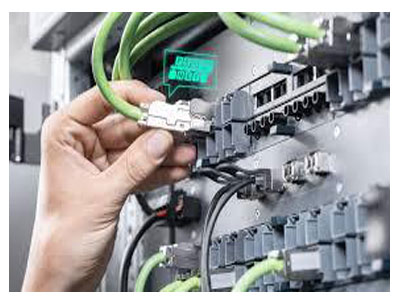Key Takeaway
PoE (Power over Ethernet) contributes to energy efficiency in industrial settings by delivering power and data over a single Ethernet cable. This eliminates the need for separate power lines, reducing energy waste and simplifying infrastructure. PoE enables centralized power management, allowing devices like sensors, cameras, and controllers to be turned on or off remotely, saving energy during downtime.
It also supports the use of energy-efficient devices, as PoE supplies only the required power to connected equipment. This prevents overloading and unnecessary consumption. By combining power and data in one cable, PoE reduces installation costs and minimizes energy loss in transmission. Its scalability and efficiency make it ideal for modern industrial networks aiming to reduce energy consumption while maintaining reliable operations.
Understanding PoE: Power and Data Over a Single Cable
PoE technology delivers both power and data through a single Ethernet cable, eliminating the need for separate power lines. This simplicity makes it ideal for industrial environments, where efficiency and reliability are critical.
For example, PoE enables devices like IP cameras, sensors, and wireless access points to operate without needing additional power adapters or electrical outlets. By leveraging the existing Ethernet infrastructure, PoE reduces the number of cables required, streamlining installations and minimizing clutter.
PoE technology also supports scalability. As new devices are added, they can be powered and connected using the same Ethernet network, saving time and resources. This dual functionality of power and data over a single cable sets the foundation for energy-efficient and cost-effective industrial networks.

Power and Data Over a Single Cable H2: How PoE Reduces Power Consumption in Industrial Devices
PoE technology inherently reduces power consumption by delivering energy only to devices that need it and adjusting power output based on demand. This dynamic power allocation minimizes energy waste, making PoE a sustainable choice for industrial operations.
For instance, in a smart factory, PoE switches can automatically detect connected devices and supply just the right amount of power required for each. If a device goes offline or becomes inactive, the switch stops supplying power, reducing unnecessary consumption.
Additionally, PoE eliminates the inefficiencies associated with external power supplies, such as energy loss during voltage conversion. By directly powering devices through Ethernet cables, PoE ensures that energy is utilized more efficiently, contributing to overall energy savings in industrial networks.
How PoE Reduces Power Consumption in Industrial Devices H2: Key Energy-Saving Features of PoE in Industrial Networks
How PoE Reduces Power Consumption in Industrial Devices
H2: Key Energy-Saving Features of PoE in Industrial Networks
Key Energy-Saving Features of PoE in Industrial Networks H2: Reducing Infrastructure CostsWith PoE Technology
One of the most significant benefits of PoE is its ability to reduce infrastructure costs. By combining power and data transmission in a single cable, PoE eliminates the need for additional power supplies, conduits, and electrical outlets.
This reduction in hardware not only saves money but also simplifies installation. For example, deploying a network of PoE-enabled IP cameras in a factory requires fewer cables and shorter installation times compared to traditional setups.
PoE also lowers ongoing maintenance costs. With fewer components to manage, there are fewer potential points of failure, resulting in lower downtime and repair expenses.
Furthermore, PoE technology is highly scalable. As businesses grow, adding new devices to the network is straightforward and cost-effective, requiring only Ethernet cables and compatible switches. This scalability makes PoE an attractive option for industries looking to future-proof their operations while controlling costs.
Reducing Infrastructure CostsWith PoE Technology H2: Best Applications for PoE in Energy-Efficient Industrial Automation
PoE technology excels in various industrial applications where energy efficiency and streamlined operations are essential. One common use is powering IP cameras and surveillance systems. PoE ensures reliable operation while reducing the need for separate power lines, simplifying deployment across large facilities.
Another key application is in smart lighting systems. PoE can power and control LED lights, allowing for centralized management and energy optimization. For example, lights in a warehouse can be programmed to dim or switch off during non-operational hours, conserving energy without manual intervention.
PoE is also widely used in industrial IoT (IIoT) applications. Sensors, controllers, and wireless access points benefit from PoE’s ability to deliver both power and data seamlessly. This simplifies network design while ensuring efficient energy use.
By supporting a wide range of devices, PoE plays a crucial role in building energy-efficient and automated industrial environments.
Conclusion
Power over Ethernet (PoE) offers a practical and efficient solution for reducing energy consumption in industrial settings. Its ability to deliver power and data through a single cable simplifies infrastructure, lowers costs, and enhances energy efficiency.
From smart lighting to industrial IoT applications, PoE is a versatile technology that supports sustainable automation. By adopting PoE, industries can achieve their energy-saving goals while maintaining high performance and scalability.
